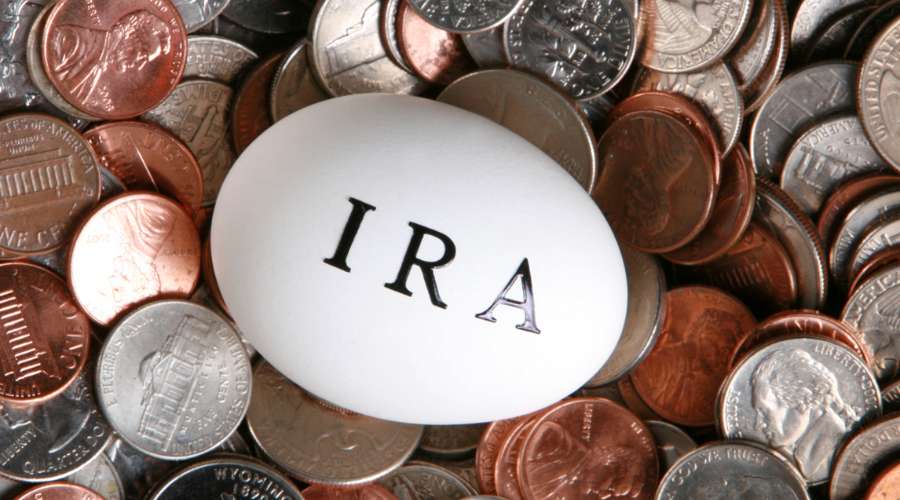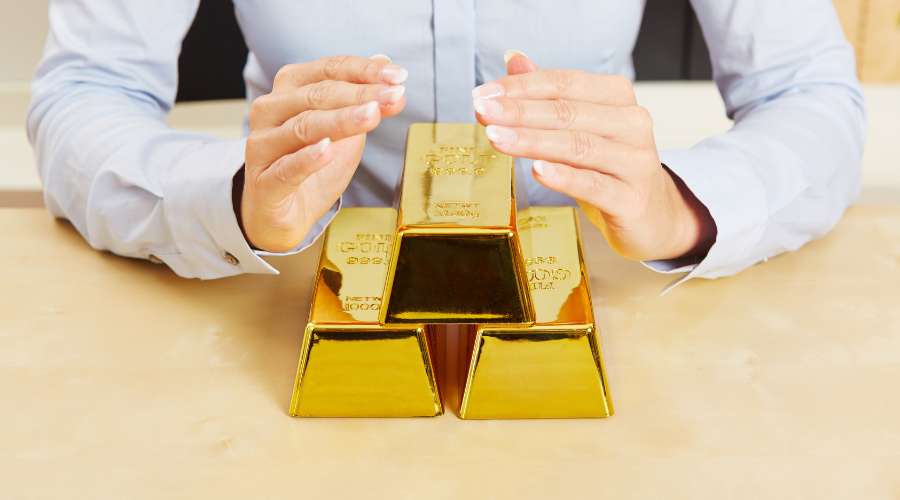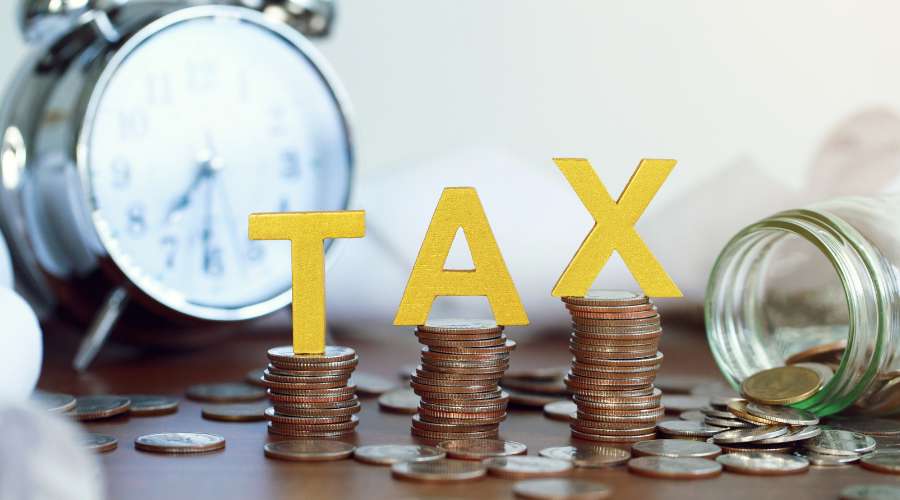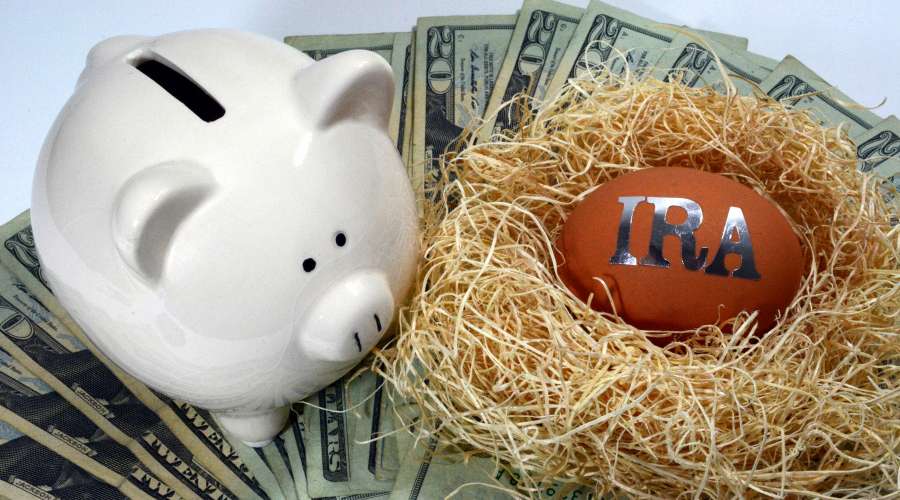A gold IRA is a type of individual retirement account that invests in gold and other precious metals, such as silver, platinum and palladium. These investments can be made in the form of coins or bullion. Many people are drawn to gold IRAs because they give the coverage of both stocks (like mutual funds) and bonds, which often protects against market volatility.
If you are interested in investing, make sure to take a look at our highest recommended companies for this year!
>> Click Here For A List Of The 5 Highest Recommended Precious Metals Investment Companies <<
What Does Gold IRA Mean to Investors?

As a hybrid between stocks, bonds and precious metals, gold IRAs provide investment protection during difficult economic times by introducing the safety of hard assets (gold, silver and platinum) into an investor's portfolio. Gold IRAs have shown similar returns to stocks over the past few decades. While this doesn't guarantee returns, many investors choose to invest in gold IRAs because of the stability of gold and other precious metal coins instead of stocks or bonds.
Individuals interested in investing in gold because of its consistent and reliable performance as a storehouse of value and an investment medium for high-net-worth individuals who wish to hedge against inflation have the option to invest their money into a gold IRA.
This type of retirement account allows investors to diversify their portfolio with gold, which has experienced a rise in popularity over the past decade. A person may invest in a gold IRA to preserve capital and protect themselves against inflation, which has been consistently rising.
Why Invest In Gold?

Many reasons encourage investors to consider investing in gold: It's arguably one of the most stable investments because it has maintained its value throughout history. Unlike stocks or bonds, investing in gold is not affected by fluctuations in the economy or market seasons. Gold has been one of the only reliable investment mediums throughout history (alongside silver).
Investing in gold, however, is a challenging decision, and the investment process involves many costs and fees. Investors should be prepared to pay roughly $2,000 in fees when they open a gold IRA and must consider that the value of the metals will fluctuate (similar to stocks or mutual funds).
Job security and diversification are important factors to consider when making an investment decision, whether it involves stocks or precious metals. Many experts agree that gold could be one of the most secure investments a person can make for future financial independence.
Many people prefer to use precious metals as protection against inflation or for long-term preservation purposes. Holding gold and other precious metals in a retirement account benefits from the tax advantages afforded to individual retirement accounts (IRAs).
According to the Internal Revenue Service, items such as stocks, bonds and mutual funds are subject to taxation. Certain types of precious metals can be placed into an IRA, allowing for tax deferral for several years. However, once an investor begins removing funds from their gold or silver IRA before they are 59 1/2 years old or retire, they must begin paying taxes on earnings.
Some of the common types of precious metals and coins that are eligible for gold IRAs are:
Palladium bullion coins (Because palladium is a relatively new precious metal in the investment market, it can only be purchased through a self-directed IRA, which requires the investor to directly handle all purchases.)
Certain rules apply when it comes to investing in gold through an IRA. If an investor wants to put their money into precious metals for protection purposes, it must be acquired for personal ownership, not as an investment.
How Much Does a Gold IRA Cost?

Many investment companies offer gold IRA plans with different investment minimums and fees. The purchase of shares of the companies that offer these metal-based IRAs usually involves professional help. Investors should consult with certified financial planners or independent insurance agents to help them make the best investment decision.
Some of the fees for gold IRAs can include the following:
Additionally, investors who want to invest in bullion coins through a gold IRA must pay taxes on the profits they receive each year.
The rules of a gold IRA are similar to those of a traditional IRA but differ in that gold, and precious metals can be used as an investment medium. Both types of IRAs allow investors to defer taxes on investments. Individuals interested in purchasing precious metals through a gold IRA should consider consulting with investment firms or certified professional financial planners to help them select stocks and other precious metal options.
While investing in gold through a gold IRA comes with many benefits, it also comes with many costs. To help an investor decide whether a precious metal-based IRA is the right strategic move for their financial future, they should consider their goals and investment appetite. The decision to invest in gold and other precious metals is ultimately up to the investor based on their risk tolerance and their confidence that the value of a gold-backed IRA will continue to rise over time.
The most popular form of self-directed retirement account is a self-directed IRA. The self-directed IRA is established by an investor or investment professional. The self-directed IRA offers many benefits, including tax-deferred growth, tax-free withdrawals and various types of investments.
A common investment for a self-directed IRA is gold and silver. Gold saved in a self-directed IRA remains exempt from capital gains taxes in the year it was purchased. Gold and silver are two of the safest investments because they have been around for thousands of years and have maintained their value.
Gold is an extremely popular investment option and is a popular target for individuals who want to invest in precious metals. Gold has maintained its value over thousands of years and can be used as an investment option.
Gold IRA investments have multiple benefits, including tax-exempt growth, tax-free withdrawals and various types of investments. Millions of Americans use their self-directed IRA to invest in gold.
Investments made through a self-directed IRA are not subject to federal income taxes. In addition, IRAs provide many other benefits, such as tax deductibility, when the funds are used for qualified expenses such as education, mortgage or charitable contributions, medical expenses and retirement plans.
People can also invest in precious metals through other types of retirement plans, such as 401(k) retirement plans and Roth IRAs. In addition to self-directed IRAs,s many benefits, investors should also consider the fees charged for these kinds of investments.
One way to use gold in an IRA is to invest in physical gold bullion coins and bars or collectable gold coins. Collectable gold coins hold their value over time and can be sold at a profit if the investor wishes to take it out of the self-directed IRA.
How is an IRA Taxed?

The type of IRA that you have will determine how it is taxed. A gold IRA is taxed similarly to a traditional IRA or 401(k): it is taxed on withdrawals and contributions. In many cases, gold IRAs are subject to lower taxes than other types.
For example, traditional or Roth IRAs are subject to income taxes when the account owner withdraws funds. However, if the owner had made after-tax contributions to that account, it becomes a "non-deductible IRA," which means it is not subject to income taxes as long as it remains in the account. In some cases, this can lead to large tax savings.
Non-deductible IRAs are advantageous because they can be given away at death without incurring any tax liability for assets withdrawn from the non-deductible IRA before death. When a spouse inherits an IRA or a qualified plan account, that inheritance is subject to income taxes. Therefore, if the account owner were to make non-deductible contributions to their IRA, it could be passed on to a surviving spouse tax-free.
For instance, you could open a gold IRA with $10,000 of your savings and $5,000 of after-tax contributions. If you do so and withdraw from the account during retirement, those withdrawals would be considered fully taxable at your income tax rate; however, your after-tax contributions (depending on your income level and age) would not be taxable when withdrawn.
From the point of view of tax planning, there are two types of IRA: traditional and Roth. Traditional IRAs are subject to a tax on the withdrawal, but you can make those withdrawals tax-free. It would be best if you opened each IRA with a contribution from an employer or an individual retirement plan. The contribution is deducted from your paycheck before taxes are withheld.
Then all distributions from these funds, including interest and capital gains, will be taxed as income to the accounts holder when received.
You can also make after-tax contributions to your traditional IRA as a relatively young person. Depending on your income and other factors, your tax rate at that time may be lower than the rates you will face when working; this would enable you to receive all or most of the contributions as your current income is taxed at that lower rate.
For example, you make $50,000 annually and contribute $10,000 to an IRA. Your balance in the account incurs a tax of 18% when withdrawn to pay for living expenses or pensions; however, it could be used tax-free at the same rate (15%) if it is withdrawn in retirement.
In the Roth IRA, all contributions, whether from employer or individual, are made with after-tax income. Your contributions can be withdrawn at any time, free of tax liability.
You could put a relatively small amount of money each year into your Roth IRA. As your income rises and you become less able to make deductible contributions to your traditional IRA, you can always make tax-deductible contributions to the traditional account and convert those funds over time into the Roth account.
Both strategies allow you to maximize the tax-free treatment of these funds while deferring taxes until withdrawal. However, if in doubt, consult an accountant or tax advisor.
Most financial experts recommend the Roth IRA over the traditional IRA, partly because the growth of your money is tax-deferred, and the money you put into it grows tax-free. In contrast, your contributions to a traditional IRA are made with after-tax income, which you would have to pay taxes on at withdrawal.
However, some people prefer not to take risks in their retirement plans and are happy with an "offshore" IRA that does not have to be reported to the IRS. A self-directed gold IRA may be just what they need.
A self-directed gold IRA can be set up in any country and excludes all reporting requirements on U.S. citizens within that jurisdiction. A self-directed gold IRA can be set up just like any other IRA, but unlike a traditional one, it is not deductible. Instead of tax-free distributions, they may be completely tax-free with no net return. Thus the only withdrawals are those made for investment or treatment of health conditions that may result in withdrawal from the account.
The best advice is to consult a qualified financial professional before investing large amounts of money into an offshore gold IRA.
One of the most important steps in managing an IRA is keeping records. Most financial advisors recommend that you keep a detailed record of all contributions, distributions and purchases. This will help you to track what you have done with your money and will help you in case it is stolen or lost.
In addition, it can be extremely useful when filing your taxes at the end of the year or when making any claim on your retirement account. If you are considering opening a gold IRA, it is a good idea to explore the country's laws where you wish to hold gold in your retirement account to see whether it is illegal to hold such assets there.
You must follow certain rules to use IRA funds to buy currency, shares of gold or silver, gold and silver bullion, or other precious metals (collectively called "Precious Metals"). In some cases, you can avoid taxes altogether. Still, there are other ways to save taxes by taking advantage of the annual "annual allowance" for contributions and the special rules for retirement accounts under IRC 408B – that allow you to re-characterize (or "re-point") IRA investments from prohibited assets back into allowable ones.
The IRS allows investors to purchase various assets in IRA accounts and pensions, including gold coins, ETFs, and even mining shares (but not a fund that buys others). There are also a wide variety of special rules for retirement accounts.
The Investment Company Act of 1940, which is the primary piece of U.S. law governing investment funds, does not cover many forms of precious metals, like gold bullion or jewellery; it does not apply to Precious Metals IRAs and 401(k) plans (IRAs have their own pension rules); and ERISA does not apply to trusts that hold Precious Metals. Generally speaking, the IRS applies the following rules.
Precious metals held in an IRA are subject to tax as income when withdrawn and capital gains taxes. The IRS has clarified that investments in a precious metals IRA are subject to the rules for that type of account. For example, if you have your Precious Metals in an IRA, the rules for IRAs apply.
How to Establish a Gold IRA

Establishing a gold or silver IRA will depend on whether you want to purchase gold coins and bullion or use collectable coins. If you are considering opening a gold IRA, it is best to open an account with an established firm such as Goldco or Augusta Precious Metals. This will ensure the most secure retirement package.
It is also important that you establish your account with no additional fees for different transactions. The simplest way to purchase gold through an IRA is to invest directly in the precious metal, which involves buying bullion coins or bars. Most investors buy gold in 20-ounce, 1-ounce and 10-ounce sizes.
These are very reliable investments where gold prices have remained relatively constant over the years. If you are interested, consider investing in larger amounts since there is a higher likelihood that you can sell it for a profit at some point if it is liquid enough.
The IRA can be opened at the bank, and the money deposited into an account. After a bank employee checks the money, it is sent to a Gold IRA custodian for safekeeping. Once the money is in possession of the custodian, you then have to decide what kind of precious metals you would like to invest in.
The value of these items depends on the market conditions at any given time, but they have been known to hold their value over long periods.
Depending on the type of precious metals you choose, it may be more beneficial for you to invest in coins rather than bullion. For example, purchasing gold bullion is time-consuming when establishing the account and selling for a profit. However, gold U.S. Mint coins can be purchased from many different coin dealers and are relatively easy to sell when the time comes.
When considering the IRA custodian, doing a little research on the company is also advisable. Some companies support various types of precious metals, such as gold, silver and platinum, while others might only offer silver bullion.
Frequently Asked Questions
Can I purchase gold bullion?
There is no IRS limitation on the type of precious metal you choose to invest in. However, some additional rules and regulations apply only to precious metals such as gold coins and bullion as opposed to collectables.
What is the annual maximum withdrawal amount?
Precious Metals IRAs limit withdrawals based on the type of precious metal you purchase. The maximum annual allowable withdrawal from your account is ten times the value of your account balance, including appreciation (the increase in value over time). For example, if you purchased a $100,000 IRA and your account balance is $125,000, the maximum annual withdrawals are $12,500.
How much do I have to invest?
The minimum amount to begin investing in a Precious Metals IRA is $5,000. However, you don't have an actual physical coin, bullion item, or collectable item to prove that you have invested in it. In that case, there are various ways you can demonstrate that you meet the requirements for investment, such as providing other financial documents.
Can I transfer money from my brokerage account into a gold IRA?
Yes. You can open a Precious Metals IRA directly with a gold or silver dealer and then transfer the cash into the gold IRA. Some dealers have separate accounts that are only accessible to clients who have purchased precious metals.
Don't forget to check out our top recommended companies before investing!
